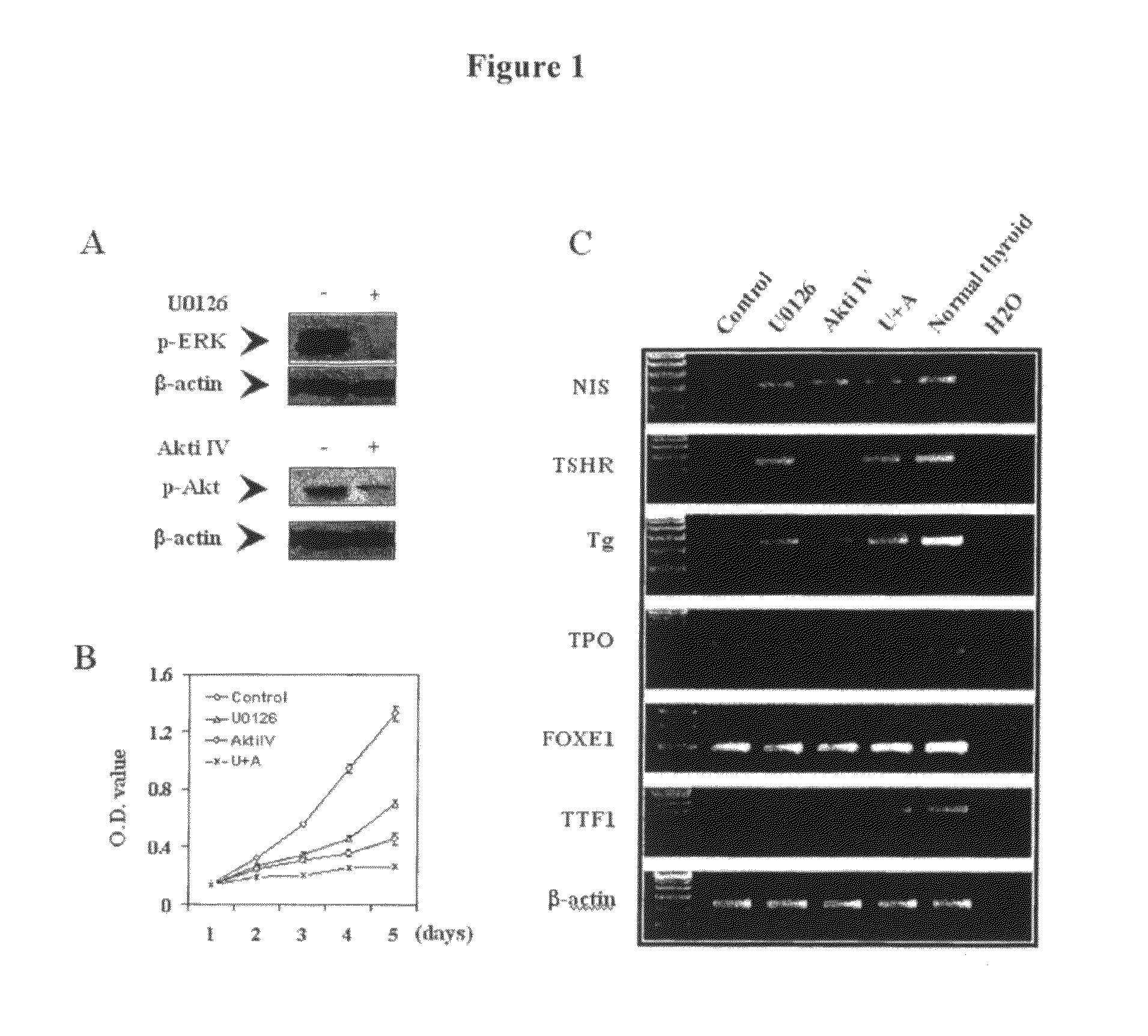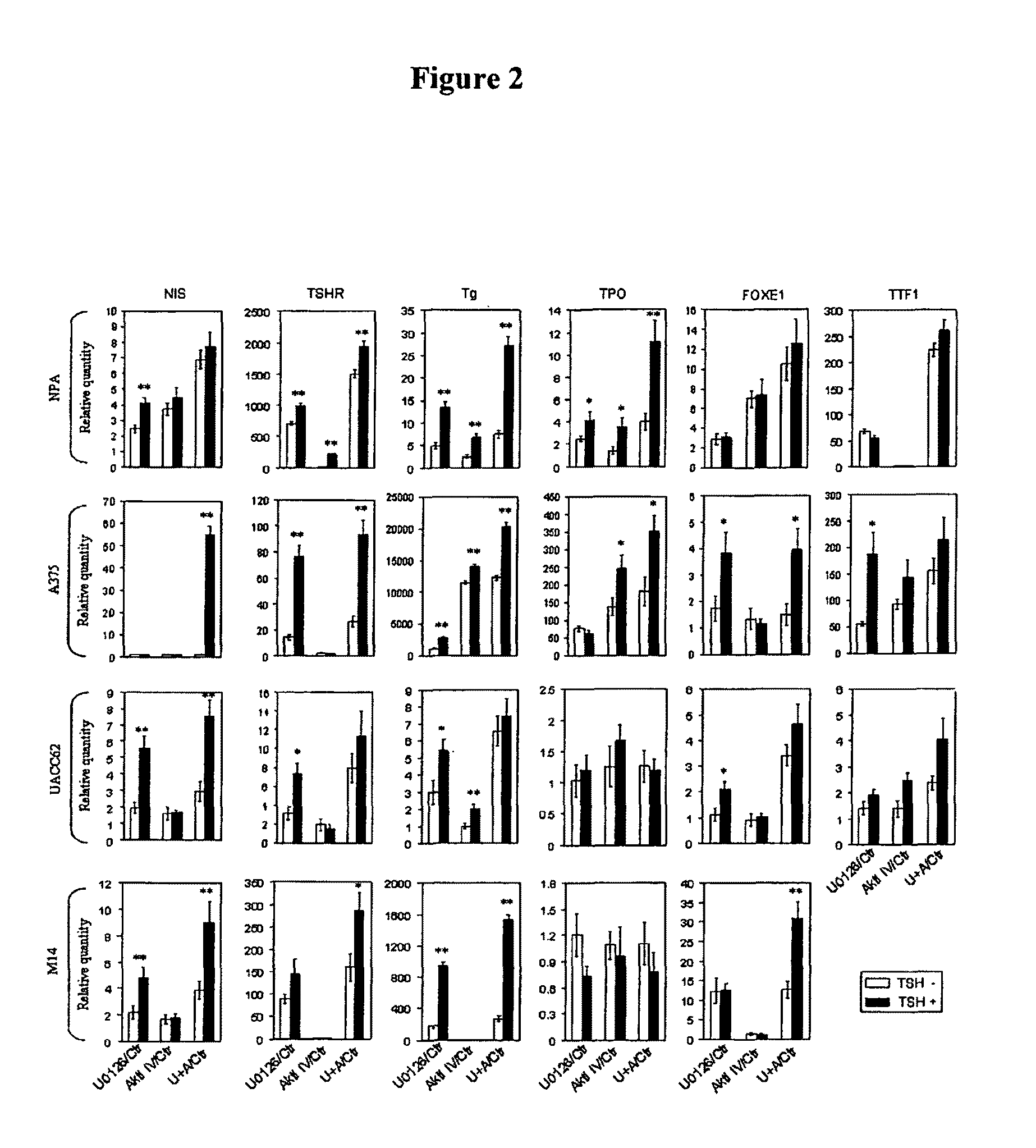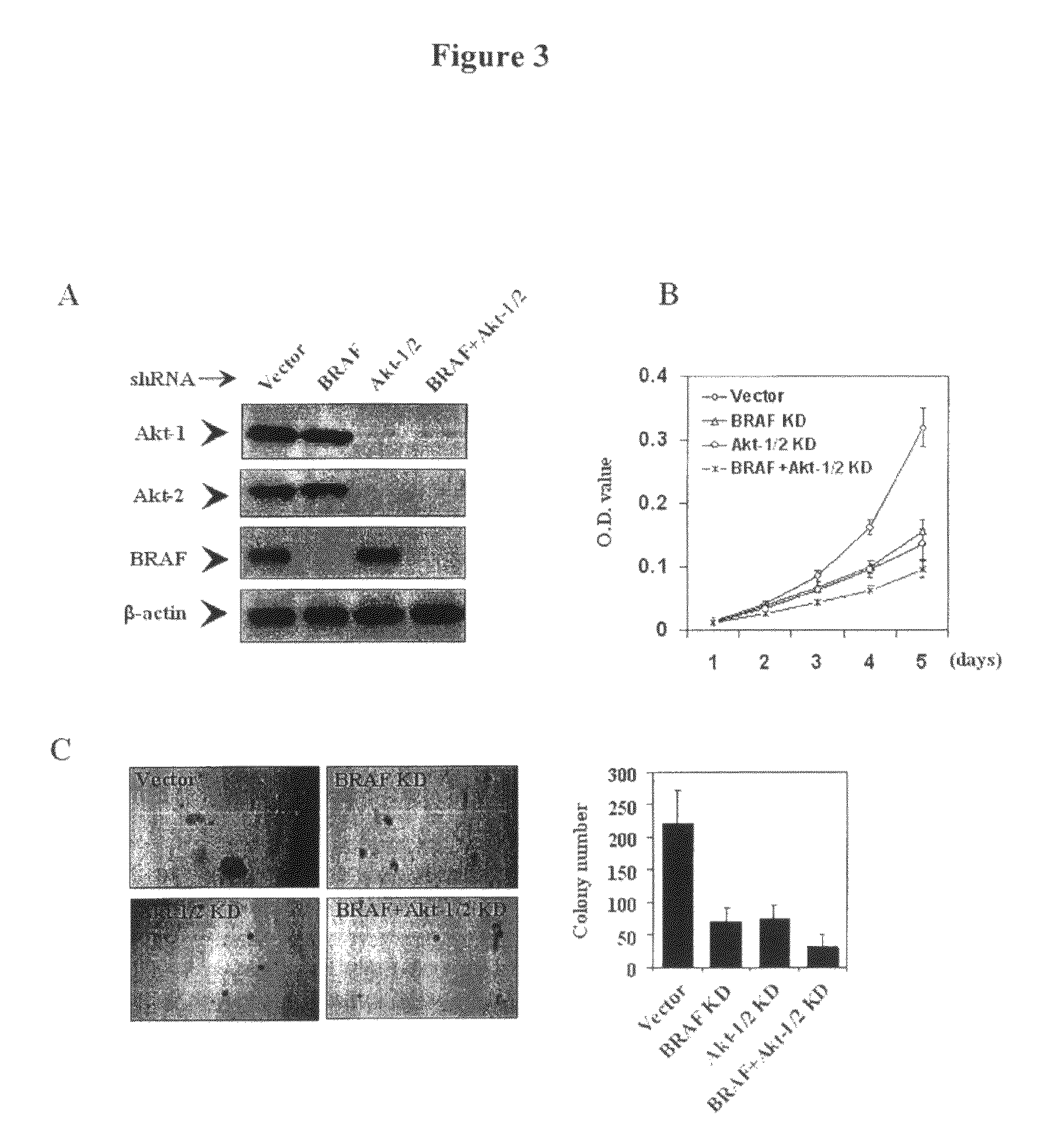Induction of thyroid iodide-handling gene expression in human cancers
a thyroid iodide and gene expression technology, applied in the field of cancer, can solve the problems of human death, no cure for many types of human cancer, advanced metastatic melanoma, etc., and achieve the effect of effective treatment of human cancer
- Summary
- Abstract
- Description
- Claims
- Application Information
AI Technical Summary
Benefits of technology
Problems solved by technology
Method used
Image
Examples
example 1
Synergistic / Additive Inhibition of Cell Proliferation and Induction of Thyroid Iodide-Handling Gene Expression in Melanoma Cells by Dually Suppressing the MAPK and PI3K / Akt Pathways Using Specific Inhibitors
[0050]We first used the melanoma cell line NPA cell, a cell clone derived from the melanoma cell line M14 cell (35), and inhibitors of the MAPK and PI3K / Akt pathways to test the therapeutic potential for melanoma of dully targeting the two pathways to induce potent cell inhibition coupled with thyroid iodide-handling gene expression for potential radioiodide treatment. As shown in FIG. 1A, treatment of cells with the MEK inhibitor U0126 and the Akt inhibitor IV (Akti IV) (38) strongly inhibited phosphorylation of ERK (p-ERK) and Akt (p-Akt), respectively. Correspondingly, the two inhibitors inhibited cell proliferation partially when used individually and virtually completely when used in combination (FIG. 1B). To explore the ability of suppressing the MAPK and PI3K / Akt pathways ...
example 2
Expression of Iodide-Handling Genes in Various Melanoma Cell Lines Induced by Suppressing the MAPK and PI3K / Akt Pathways and its Enhancement or Synergy by TSH Stimulation
[0051]Encouraged by the novel finding of the expression of iodide-handling genes upon suppression of the MAPK and PI3K / Akt pathways in the NPA cell, we extended this study to other melanoma cell lines. As shown in FIG. 2, in several melanoma cell lines tested, including M14, UACC62, A-375 and, again, NPA cells, dually suppressing the MAPK and PI3K / Akt pathways by U0126 and Akti IV showed synergistic / additive effects on the expression of most of the iodide-handling genes compared with suppressing either pathway alone. Since TSHR plays an important role in up-regulating the iodide-handling genes in thyroid cells (21) and is expressed in melanoma cells upon suppression of the MAPK and PI3K / Akt pathways, we investigated whether TSH treatment could affect the expression of iodide-handling genes in melanoma cells. Remarka...
example 3
Cellular Inhibition of Melanoma Cells by siRNA Knockdown of BRAF and Akt-1 / 2
[0052]The above findings from the experiments using pharmacological inhibitors strongly suggest that dually targeting the MAPK and PI3K / Akt signaling pathways to induce both cellular inhibition and thyroid gene expression for adjunct radioiodine ablation therapy could be a novel and effective therapeutic strategy for melanoma. To more specifically test this hypothesis, in the next series of experiments, we used siRNA approaches to specifically knock down the MAPK and PI3K / Akt pathways, individually or dually in a selected melanoma cell line, the NPA cell. We pursued stable transfection with dual knockdown of Akt-1 and Akt-2 in combination with BRAF knockdown to achieve dual suppression of the two signaling pathways. To this end, we stably transfected NPA cells with pSicoR-PGK-puro encoding specific shRNA homologue sequences for Akt-1 and Akt-2 (Akt-1 / 2), superimposed with or without stable transfection of sp...
PUM
| Property | Measurement | Unit |
|---|---|---|
| radioactivity | aaaaa | aaaaa |
| radioiodide imaging | aaaaa | aaaaa |
| Tg | aaaaa | aaaaa |
Abstract
Description
Claims
Application Information
 Login to View More
Login to View More - R&D
- Intellectual Property
- Life Sciences
- Materials
- Tech Scout
- Unparalleled Data Quality
- Higher Quality Content
- 60% Fewer Hallucinations
Browse by: Latest US Patents, China's latest patents, Technical Efficacy Thesaurus, Application Domain, Technology Topic, Popular Technical Reports.
© 2025 PatSnap. All rights reserved.Legal|Privacy policy|Modern Slavery Act Transparency Statement|Sitemap|About US| Contact US: help@patsnap.com



